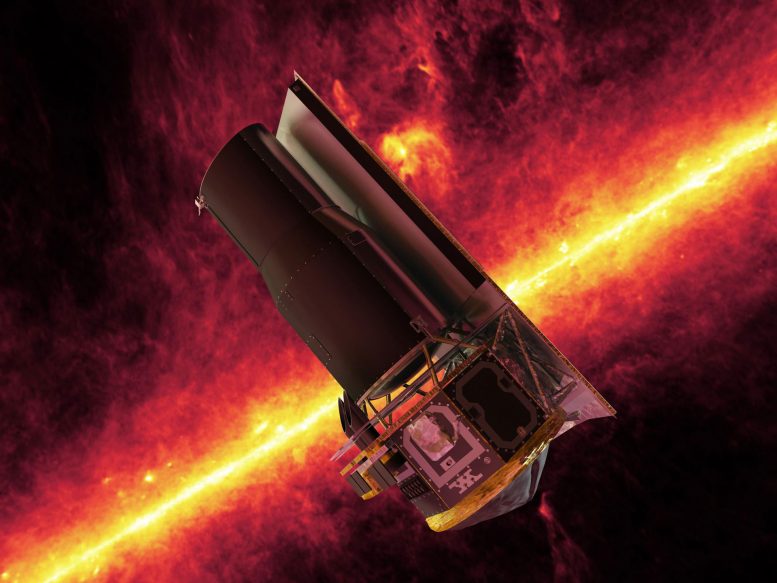Spitzer Space Telescopee image of nebula W40, a nursery for hundreds of baby stars. Credit: NASA/JPL-Caltech
What looks like a red butterfly in space is in reality a nursery for hundreds of baby stars, revealed in this infrared image from NASA’s Spitzer Space Telescope. Officially named W40, the butterfly is a nebula – a giant cloud of gas and dust in space where new stars may form. The butterfly’s “wings” are giant bubbles of hot, interstellar gas blowing from the hottest, most massive stars in this region.
The material that forms W40’s wings was ejected from a dense cluster of stars that lies between the wings in the image. The hottest, most massive of these stars, W40 IRS 1a, lies near the center of the star cluster.
W40 is about 1,400 light-years from the Sun, about the same distance as the well-known Orion nebula, although the two are almost 180 degrees apart in the sky.

This image shows an artist’s impression of the Spitzer Space Telescope. The background shows an infrared image from Spitzer of the plane of the Milky Way galaxy. Credits: NASA/JPL
Launched on August 25, 2003, NASA’s Spitzer Space Telescope’s goal was to provide a unique, infrared view of the universe and allow us to peer into regions of space that are hidden from optical telescopes. It was the final mission in NASA’s Great Observatories Program — a family of four space-based observatories, each observing the Universe in a different kind of light. The other missions in the program include the visible-light Hubble Space Telescope (HST), Compton Gamma-Ray Observatory (CGRO), and the Chandra X-Ray Observatory (CXO). Its mission ended on January 30, 2020.





